
Many vegetable gardening books include recipes but few are as well integrated as in “Grow Cook Eat” –for Willi Galloway cooking follows sowing, growing, and harvesting as the next logical step (presumably followed by eating). In addition to the formal recipes (none are particularly complex), there are oodles of simple ideas for using the vegetable (or herbs, or even a few fruits) at hand in creative and delicious ways. Jim Henkens’s photos expertly capture growing plants, the fresh harvest, and the serving plate, encouraging you to give it a try. The general culture section is brief but sufficient–the goal here is to get growing and get eating–yum!
Excerpted from the Winter 2013 Arboretum Bulletin.
 Peter Ladner writes The Urban Food Revolution from the perspective of a policy maker–he was a two-term City Councillor in Vancouver, B.C.–and a journalist. This is not a gardening book or even an urban farming book, but it does examine issues that impact food production and distribution in an urban setting with the goal of telling policymakers “…what they can do to improve access to healthy food for all the people they represent.” Subjects addressed include food deserts, childhood obesity, designing new developments with urban farming options, and the safety of locally raised food.
Peter Ladner writes The Urban Food Revolution from the perspective of a policy maker–he was a two-term City Councillor in Vancouver, B.C.–and a journalist. This is not a gardening book or even an urban farming book, but it does examine issues that impact food production and distribution in an urban setting with the goal of telling policymakers “…what they can do to improve access to healthy food for all the people they represent.” Subjects addressed include food deserts, childhood obesity, designing new developments with urban farming options, and the safety of locally raised food.
Excerpted from the Winter 2013 Arboretum Bulletin.
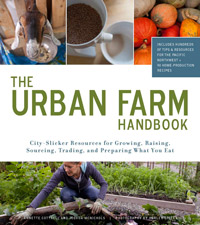 The Urban Farm Handbook is a blending of deeply personal accounts by two urban (Seattle) families seeking ways of becoming self-reliant in producing and preparing food. By sharing both the triumphs and failures (including persuading significant others), Annette Cottrell and Joshua McNichols present a lot of options for choosing your own path to provide food for yourself and loved ones. Recipes are scattered throughout, and many of those contain meat. Dealing with the angst of slaughtering various animals to supply that meat is a significant theme of the book, but here, too, the authors give you many options for finding your own comfort level.
The Urban Farm Handbook is a blending of deeply personal accounts by two urban (Seattle) families seeking ways of becoming self-reliant in producing and preparing food. By sharing both the triumphs and failures (including persuading significant others), Annette Cottrell and Joshua McNichols present a lot of options for choosing your own path to provide food for yourself and loved ones. Recipes are scattered throughout, and many of those contain meat. Dealing with the angst of slaughtering various animals to supply that meat is a significant theme of the book, but here, too, the authors give you many options for finding your own comfort level.
Excerpted from the Winter 2013 Arboretum Bulletin.
 Robert and Hannah Litt own the Urban Farm Store in Portland and wrote “A Chicken in Every Yard” from experience keeping their own chickens, and helping their chicken-keeping customers. While they don’t disapprove of raising chickens for food, theirs are clearly pets and the book encourages this attitude with chapters like “Parenting Your Peeps.” There is a lot of detail about different types and breeds, including recommendation lists such as “best for children.” All stages of raising and caring are covered in depth, but the garden is only briefly mentioned. If your focus is solely on chickens, this book is an excellent choice.
Robert and Hannah Litt own the Urban Farm Store in Portland and wrote “A Chicken in Every Yard” from experience keeping their own chickens, and helping their chicken-keeping customers. While they don’t disapprove of raising chickens for food, theirs are clearly pets and the book encourages this attitude with chapters like “Parenting Your Peeps.” There is a lot of detail about different types and breeds, including recommendation lists such as “best for children.” All stages of raising and caring are covered in depth, but the garden is only briefly mentioned. If your focus is solely on chickens, this book is an excellent choice.
Excerpted from the Winter 2013 Arboretum Bulletin.
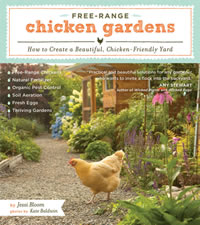
First review:
Jessi Bloom is a strong advocate for chickens in almost any garden setting, and in “Free-Range Chicken Gardens,” she provides detailed information on compatible plantings–including those that provide food for chickens–and structures that meet the multiple needs of fowl and flora. There is a lot of well-organized information in these pages on all other related topics, too, making this of value to chicken keepers at any experience level. But you can also just enjoy the profiles of gardeners and their chickens (many are local) or the many superb photographs (by Kate Baldwin) of contented hens in their gardens, proving their value as a natural compliment.
Excerpted from the Winter 2013 Arboretum Bulletin.
Second review:
How does allowing chickens to range freely work with a garden? Very well – it just takes a lot of compromise and ingenuity. A book that deeply addresses these issues is Free-Range Chicken Gardens by Jessi Bloom of Seattle.
Here are specific guidelines for the design of a chicken compatible landscape. How to protect prize plants while still giving your flock the opportunity to roam and find a more natural diet. As a gardener, you are encouraged to try plant selections that will nourish your hens, or shelter them from predators or weather. The advantages can work both ways. Some plants will screen your chicken run, or even give off fragrance to mask odors.
Bloom recognizes this doesn’t work for everyone. “If your garden must be perfect…then you might not want chickens free ranging.”
Published in Garden Notes: Northwest Horticultural Society, Fall 2018
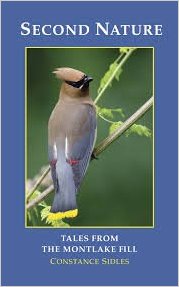 Any reader of Connie Sidles’ first book, (“In My Nature: A Birder’s Year at the Montlake Fill”–2009) will be delighted to learn she has written and published a second collection of her observations, insights, and quiet life lessons gleaned from her continuing visits to the landfill known officially as the Union Bay Natural Area (UBNA). The style of Second Nature is much like the first, but there are more great close-up photographs of birds, including rarities like a Lazuli Bunting or a Western Scrub-Jay.
Any reader of Connie Sidles’ first book, (“In My Nature: A Birder’s Year at the Montlake Fill”–2009) will be delighted to learn she has written and published a second collection of her observations, insights, and quiet life lessons gleaned from her continuing visits to the landfill known officially as the Union Bay Natural Area (UBNA). The style of Second Nature is much like the first, but there are more great close-up photographs of birds, including rarities like a Lazuli Bunting or a Western Scrub-Jay.
Excerpted from the Fall 2012 Arboretum Bulletin.
 A strong woman from the early 20th century was Elizabeth Colborne (1885-1948), who grew up in Bellingham. She was an artist that worked in several media with various subjects, but is best remembered for her color woodcuts of northwest forest scenes, with detailed and accurate renditions of our native trees and other plants. Evergreen Muse by David Martin is a catalog of her works displayed in an exhibit at the Whatcom Museum in Bellingham during the summer of 2011.
A strong woman from the early 20th century was Elizabeth Colborne (1885-1948), who grew up in Bellingham. She was an artist that worked in several media with various subjects, but is best remembered for her color woodcuts of northwest forest scenes, with detailed and accurate renditions of our native trees and other plants. Evergreen Muse by David Martin is a catalog of her works displayed in an exhibit at the Whatcom Museum in Bellingham during the summer of 2011.
Excerpted from the Fall 2012 Arboretum Bulletin.
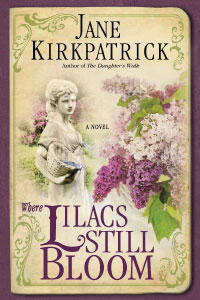 Hulda Klager (1863-1960) was a Pacific Northwest pioneer. This Woodland, Washington farm wife survived numerous hardships, but is best remembered for the wonderful collection of lilacs she hybridized and introduced in the first half of the 20th century, and the garden now open to the public that displays those lilacs. The historical novel “Where Lilacs Still Bloom” by Jane Kirkpatrick is largely an accurate biography, with only minor liberties taken to amalgamate some of the real life personalities in Klager’s life.
Hulda Klager (1863-1960) was a Pacific Northwest pioneer. This Woodland, Washington farm wife survived numerous hardships, but is best remembered for the wonderful collection of lilacs she hybridized and introduced in the first half of the 20th century, and the garden now open to the public that displays those lilacs. The historical novel “Where Lilacs Still Bloom” by Jane Kirkpatrick is largely an accurate biography, with only minor liberties taken to amalgamate some of the real life personalities in Klager’s life.
Excerpted from the Fall 2012 Arboretum Bulletin.
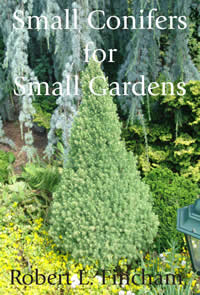 A local garden and nursery that’s not well known is Coenosium Gardens in Eatonville. Owner Robert Fincham has traveled widely in his quest for dwarf conifers and the book Small Conifers for Small Gardens catalogs the many fine dwarf firs, spruce, pines, hemlocks, and assorted other species he has collected and grown. If you have considered adding conifers that won’t outgrow your garden, this introduction to the merits of over two hundred choices, along with anecdotes about each, is a must read.
A local garden and nursery that’s not well known is Coenosium Gardens in Eatonville. Owner Robert Fincham has traveled widely in his quest for dwarf conifers and the book Small Conifers for Small Gardens catalogs the many fine dwarf firs, spruce, pines, hemlocks, and assorted other species he has collected and grown. If you have considered adding conifers that won’t outgrow your garden, this introduction to the merits of over two hundred choices, along with anecdotes about each, is a must read.
Excerpted from the Fall 2012 Arboretum Bulletin.
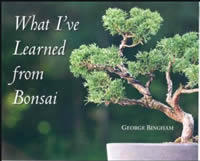 George Bingham is based in Olympia and had been engaged in bonsai for about nine years when “What I’ve Learned from Bonsai” was published in 2008. This very personal book shares his observation about both the art of bonsai and the life lessons he has gained while working with his plants and living with multiple sclerosis.
George Bingham is based in Olympia and had been engaged in bonsai for about nine years when “What I’ve Learned from Bonsai” was published in 2008. This very personal book shares his observation about both the art of bonsai and the life lessons he has gained while working with his plants and living with multiple sclerosis.
Excerpted from the Fall 2012 Arboretum Bulletin.

 Peter Ladner writes
Peter Ladner writes 
 Robert and Hannah Litt own the Urban Farm Store in Portland and wrote
Robert and Hannah Litt own the Urban Farm Store in Portland and wrote 
 Any reader of Connie Sidles’ first book, (“In My Nature: A Birder’s Year at the Montlake Fill”–2009) will be delighted to learn she has written and published a second collection of her observations, insights, and quiet life lessons gleaned from her continuing visits to the landfill known officially as the Union Bay Natural Area (UBNA). The style of Second Nature is much like the first, but there are more great close-up photographs of birds, including rarities like a Lazuli Bunting or a Western Scrub-Jay.
Any reader of Connie Sidles’ first book, (“In My Nature: A Birder’s Year at the Montlake Fill”–2009) will be delighted to learn she has written and published a second collection of her observations, insights, and quiet life lessons gleaned from her continuing visits to the landfill known officially as the Union Bay Natural Area (UBNA). The style of Second Nature is much like the first, but there are more great close-up photographs of birds, including rarities like a Lazuli Bunting or a Western Scrub-Jay. A strong woman from the early 20th century was Elizabeth Colborne (1885-1948), who grew up in Bellingham. She was an artist that worked in several media with various subjects, but is best remembered for her color woodcuts of northwest forest scenes, with detailed and accurate renditions of our native trees and other plants. Evergreen Muse by David Martin is a catalog of her works displayed in an exhibit at the Whatcom Museum in Bellingham during the summer of 2011.
A strong woman from the early 20th century was Elizabeth Colborne (1885-1948), who grew up in Bellingham. She was an artist that worked in several media with various subjects, but is best remembered for her color woodcuts of northwest forest scenes, with detailed and accurate renditions of our native trees and other plants. Evergreen Muse by David Martin is a catalog of her works displayed in an exhibit at the Whatcom Museum in Bellingham during the summer of 2011. Hulda Klager (1863-1960) was a Pacific Northwest pioneer. This Woodland, Washington farm wife survived numerous hardships, but is best remembered for the wonderful collection of lilacs she hybridized and introduced in the first half of the 20th century, and the garden now open to the public that displays those lilacs. The historical novel “Where Lilacs Still Bloom” by Jane Kirkpatrick is largely an accurate biography, with only minor liberties taken to amalgamate some of the real life personalities in Klager’s life.
Hulda Klager (1863-1960) was a Pacific Northwest pioneer. This Woodland, Washington farm wife survived numerous hardships, but is best remembered for the wonderful collection of lilacs she hybridized and introduced in the first half of the 20th century, and the garden now open to the public that displays those lilacs. The historical novel “Where Lilacs Still Bloom” by Jane Kirkpatrick is largely an accurate biography, with only minor liberties taken to amalgamate some of the real life personalities in Klager’s life. A local garden and nursery that’s not well known is Coenosium Gardens in Eatonville. Owner Robert Fincham has traveled widely in his quest for dwarf conifers and the book Small Conifers for Small Gardens catalogs the many fine dwarf firs, spruce, pines, hemlocks, and assorted other species he has collected and grown. If you have considered adding conifers that won’t outgrow your garden, this introduction to the merits of over two hundred choices, along with anecdotes about each, is a must read.
A local garden and nursery that’s not well known is Coenosium Gardens in Eatonville. Owner Robert Fincham has traveled widely in his quest for dwarf conifers and the book Small Conifers for Small Gardens catalogs the many fine dwarf firs, spruce, pines, hemlocks, and assorted other species he has collected and grown. If you have considered adding conifers that won’t outgrow your garden, this introduction to the merits of over two hundred choices, along with anecdotes about each, is a must read. George Bingham is based in Olympia and had been engaged in bonsai for about nine years when “What I’ve Learned from Bonsai” was published in 2008. This very personal book shares his observation about both the art of bonsai and the life lessons he has gained while working with his plants and living with multiple sclerosis.
George Bingham is based in Olympia and had been engaged in bonsai for about nine years when “What I’ve Learned from Bonsai” was published in 2008. This very personal book shares his observation about both the art of bonsai and the life lessons he has gained while working with his plants and living with multiple sclerosis.